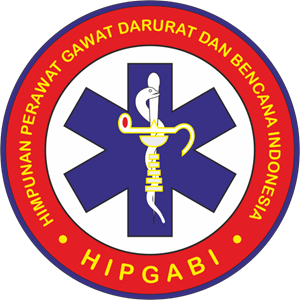Application of Deep Diaphragmatic Breathing in Cases of Acute Decompensated Heart Failure with Ineffective Breathing Patterns in Surabaya Hospitals
Downloads
Introduction: Acute Decompensated Heart Failure (ADHF) is a sudden worsening of heart failure symptoms. In 2019, WHO reported 17.9 million deaths worldwide from heart disease, with ADHF affecting 1.5% of Indonesia’s population. Shortness of breath is the most common symptom, occurring in 80% of hospitalized ADHF patients. Deep Diaphragmatic Breathing can help improve breathing by strengthening the diaphragm. This case study aimed to evaluate the effectiveness of Deep Diaphragmatic Breathing in improving respiratory status in patients with Acute Decompensated Heart Failure (ADHF).
Objective: This research used a descriptive case study design with a single case study approach 7 days, assessing and evaluating the effects of Deep Diaphragmatic Breathing exercises to reduces ineffective breathing patterns in Acute Decompensated Heart Failure. Data collection through interviews, observation, measurement, physical examination, and medical records.
Case: A 46-year-old patient with Acute Decompensated Heart Failure (ADHF) was admitted with shortness of breath, nausea, vomiting, and loss of appetite for one day. On examination, the patient was conscious (GCS 456), BP 95/66 mmHg, temperature 36.2°C, pulse 68/min, RR 22/min, SpO₂ 98% (with nasal cannula), weight 60 kg, and height 167 cm. The main complaint was dyspnea, especially when lying down, with wheezing and irregular breathing. Blood test (B2) showed weak palpable pulse, warm moist extremities, and transient chest pain. Nursing care included respiratory monitoring, deep diaphragmatic breathing, and positioning in Fowler or semi-Fowler. By day 6, breathing improved (RR 18/min, SpO₂ 99%) without oxygen support.
Conclusion: Deep Diaphragmatic Breathing reduced ineffective breathing patterns in ADHF patients. Future research should involve larger sample sizes and explore long-term outcomes to strengthen evidence for its clinical application.
Copyright (c) 2025 Mohammad Rizal Diansya, Laily Hidayati, Ika Yuni Widyawati, Destya Eka Nurviana

This work is licensed under a Creative Commons Attribution 4.0 International License.
1. The journal allows the author to hold the copyright of the article without restrictions.
2. The journal allows the author(s) to retain publishing rights without restrictions.
3. The legal formal aspect of journal publication accessibility refers to Creative Commons Attribution (CC BY).

















